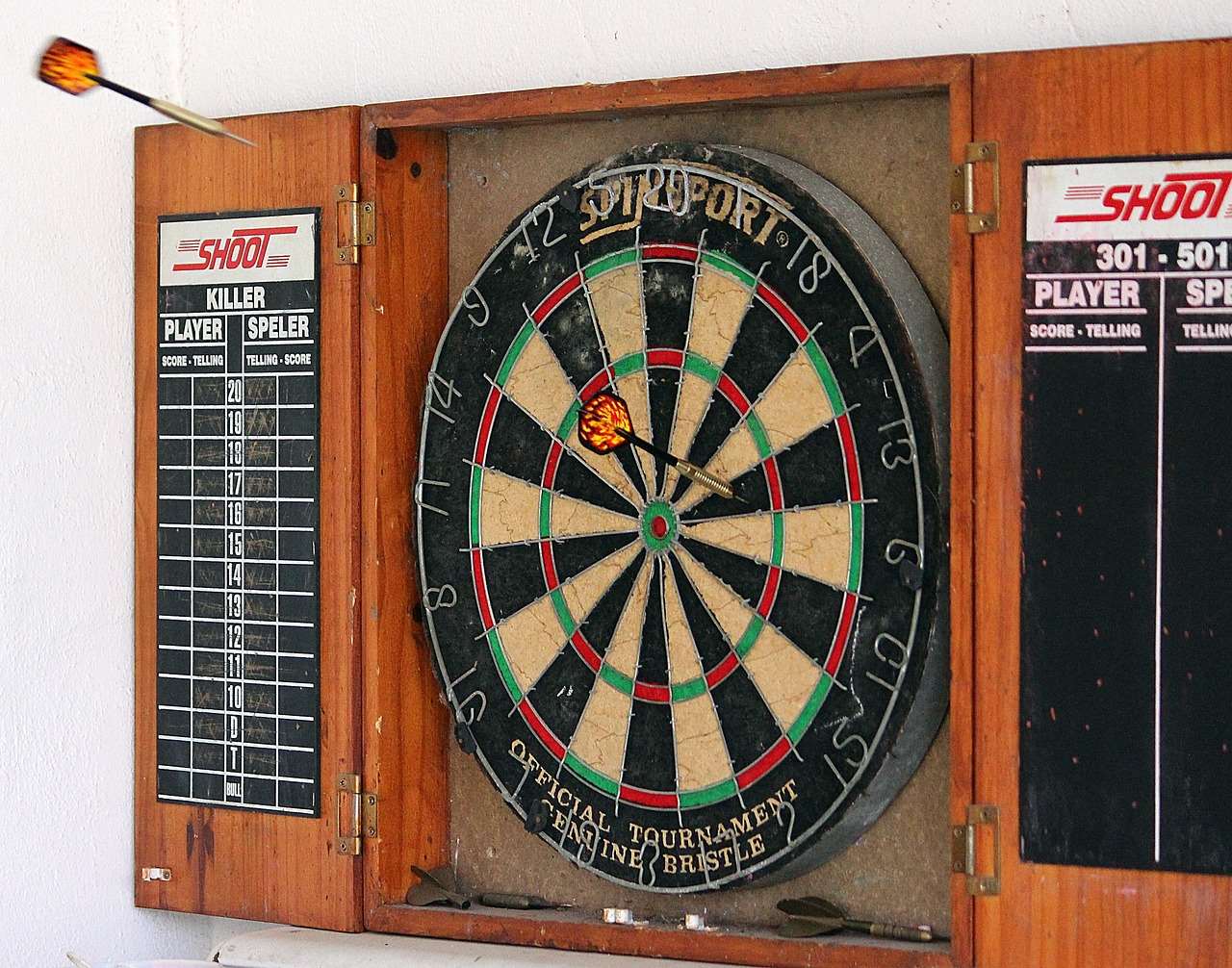The key to communicating fouls and penalties clearly lies in proactive education, concise explanations, and consistent enforcement. This article will explore practical strategies for ensuring everyone understands the rules, the consequences of breaking them, and how penalties are applied fairly.
⚠️ Still Using Pen & Paper (or a Chalkboard)?! ⚠️
Step into the future! The Dart Counter App handles all the scoring, suggests checkouts, and tracks your stats automatically. It's easier than you think!
Try the Smart Dart Counter App FREE!Ready for an upgrade? Click above!
The Importance of Communicating Fouls and Penalties Clearly
In any game or activity, rules are the bedrock of fairness and sportsmanship. Without clear rules and understandable penalties, confusion reigns, and disputes arise. When communicating fouls and penalties clearly, you create a level playing field, foster respect, and enhance the overall enjoyment of the experience for everyone involved. Clear communication minimizes arguments, encourages self-regulation, and promotes a positive environment. Consider the impact unclear rules have on a game of Basic Darts Fundamentals for Beginners. Imagine a scenario where a player accidentally crosses the oche (throwing line). If the rule isn’t clearly stated and consistently enforced, accusations of cheating and bad sportsmanship can easily escalate.

The Ripple Effect of Poor Communication
The impact of poor communication extends far beyond immediate gameplay. It can:
- Erode trust between players and referees/officials.
- Lead to inconsistent application of rules.
- Create a hostile or competitive atmosphere.
- Discourage participation, especially among new or less experienced individuals.
- Damage the reputation of the game or organization.
Therefore, investing time and effort in communicating fouls and penalties clearly is crucial for the long-term health and success of any activity governed by rules.
Strategies for Effective Communication
Effective communication is multifaceted and requires a proactive approach. Here are several strategies that can help:
1. Proactive Education: Before the Game Begins
The most effective way to prevent confusion and disputes is to educate participants about the rules and penalties *before* they start playing. This can be achieved through:
- Rulebooks and Handouts: Provide clearly written rulebooks or handouts with simple language and easy-to-understand explanations. Consider using diagrams or illustrations to clarify complex rules.
- Pre-Game Briefings: Conduct short pre-game briefings to review the key rules and penalties. Answer any questions participants may have.
- Online Resources: Create a website or online forum where participants can access rules, FAQs, and videos explaining common fouls and penalties.
- Demonstrations: If possible, demonstrate common fouls and penalties to visually illustrate what they look like and how they are enforced.
When explaining rules, avoid jargon and technical terms. Use plain language that everyone can understand. Emphasize the *why* behind the rules, explaining how they contribute to fairness and safety.

2. Concise and Clear Explanations During Gameplay
Even with proactive education, fouls and penalties will inevitably occur during gameplay. When they do, it’s essential to provide concise and clear explanations of the violation and the resulting penalty. Here’s how:
- Identify the Rule Broken: Clearly state which rule was violated. For example, “That’s a foul for stepping over the line.”
- Explain the Penalty: Explain the consequence of the foul. For example, “The penalty is a loss of possession.”
- Use Simple Language: Avoid jargon and technical terms. Use plain language that everyone can understand.
- Be Calm and Respectful: Maintain a calm and respectful demeanor, even when dealing with frustrated or angry players.
- Answer Questions: Be prepared to answer questions about the call. If you’re unsure of the answer, admit it and consult the rulebook or another official.
It’s crucial to be consistent in your explanations and enforcement of the rules. Inconsistency can lead to confusion and resentment.
3. Visual Aids for Clarity
Visual aids can be incredibly helpful in communicating fouls and penalties clearly. Consider using:
- Hand Signals: Develop a set of clear and distinct hand signals to communicate different fouls and penalties.
- Scoreboards and Displays: Use scoreboards and displays to clearly show penalties and their impact on the game.
- Diagrams and Charts: Create diagrams and charts to illustrate complex rules or penalty situations.
- Warning Cards: Use warning cards to provide a visual reminder of specific fouls or penalties.
The key is to choose visual aids that are easily understood and visible to all participants.
4. The Role of Body Language and Tone
Effective communication isn’t just about what you say; it’s also about how you say it. Your body language and tone of voice can significantly impact how your message is received. Here are some tips:
- Maintain Eye Contact: Eye contact shows that you are engaged and sincere.
- Use a Calm and Even Tone: Avoid raising your voice or speaking in a sarcastic tone.
- Be Aware of Your Body Language: Avoid crossing your arms, frowning, or fidgeting. These actions can convey negativity.
- Show Empathy: Acknowledge the player’s frustration, but firmly uphold the rules.
Remember, your goal is to de-escalate the situation and ensure that everyone understands the ruling.
Addressing Common Challenges in Communicating Fouls and Penalties Clearly
1. Language Barriers
When dealing with participants who speak different languages, it’s crucial to find ways to bridge the communication gap. Consider:
- Using Interpreters: If possible, provide interpreters who can translate the rules and explanations.
- Visual Aids: Rely heavily on visual aids, such as hand signals and diagrams.
- Simplified Language: Use simple, concise language that is easy to understand, even for non-native speakers.
- Written Translations: Provide written translations of the rulebook and other important documents.
Patience and understanding are essential when communicating with individuals who have limited English proficiency.
2. Emotional Reactions
Fouls and penalties can often trigger emotional reactions, especially in competitive situations. When dealing with angry or frustrated players, it’s important to:
- Remain Calm: Don’t let their emotions escalate your own.
- Listen Attentively: Allow them to vent their frustrations, but don’t interrupt.
- Acknowledge Their Feelings: Show empathy and acknowledge their feelings. For example, “I understand you’re frustrated, but…”
- Reiterate the Rule: Clearly and concisely reiterate the rule that was violated and the reason for the penalty.
- Avoid Arguing: Don’t get drawn into an argument. Stick to the facts and the rules.
Sometimes, simply giving a player the opportunity to vent their frustrations can help de-escalate the situation.
3. Complex or Ambiguous Rules
Sometimes, the rules themselves can be complex or ambiguous, making it difficult to communicate fouls and penalties clearly. In these cases, it’s important to:
- Seek Clarification: Consult with other officials or the governing body to get clarification on the rule.
- Apply the Rule Consistently: Once you have a clear understanding of the rule, apply it consistently in all situations.
- Document the Ruling: Document the ruling and the reasoning behind it. This can help prevent future confusion.
- Recommend Rule Changes: If the rule is consistently causing problems, recommend that it be changed or clarified.
A well-written and unambiguous rulebook is essential for effective communication.
It’s also important to be prepared to adapt the rules based on the participants involved. For example, you might consider Adapting dart game rules for children to ensure fair and enjoyable play.
4. Cultural Differences
Different cultures may have different interpretations of rules and penalties. What is considered a minor infraction in one culture may be a serious offense in another. To address cultural differences:
- Research: Before interacting with individuals from different cultures, research their customs and traditions related to sports and competition.
- Be Respectful: Show respect for their culture and traditions.
- Explain the Rules Clearly: Explain the rules and penalties in a way that is sensitive to cultural differences.
- Ask Questions: Don’t be afraid to ask questions if you’re unsure about something.
Cultural sensitivity is crucial for fostering positive relationships and ensuring fair play.
The Long-Term Benefits of Clear Communication

The benefits of investing in communicating fouls and penalties clearly extend far beyond immediate gameplay. It fosters a culture of respect, fairness, and sportsmanship. It reduces conflict and improves the overall experience for everyone involved. Moreover, it enhances the reputation of the game or organization and encourages participation. Clear communication also helps prevent misunderstandings and disagreements, leading to smoother gameplay and a more enjoyable experience for all. Think of adapting the rules for different skill levels by modifying rules for mixed-level dart players. This involves clearly communicating these modified rules to ensure a fair and engaging experience for all participants.
Consider also the impact on skill development. When penalties are clearly explained, players are better able to understand the consequences of their actions and adjust their gameplay accordingly. This leads to improved skills and a deeper understanding of the game. Consider how how-to-make-darts-fairer-with-handicap-rules helps ensure a fair match. Clear communication also promotes self-regulation. When players understand the rules and the penalties for breaking them, they are more likely to regulate their own behavior and avoid committing fouls.
Technology’s Role in Enhancing Clarity

In today’s world, technology can play a significant role in communicating fouls and penalties clearly. Digital tools can be used to:
- Develop Interactive Rulebooks: Create interactive rulebooks with videos, animations, and quizzes.
- Implement Instant Replay Systems: Use instant replay systems to review controversial calls.
- Utilize Communication Apps: Employ communication apps to send out rule updates and announcements.
- Create Training Modules: Develop online training modules to educate players and officials about the rules.
By leveraging technology, you can make rules and penalties more accessible and engaging for everyone involved. For instance, a mobile app could display diagrams of fouls or instantly translate rules into multiple languages. Remember the importance of Alternative darts rules for home play. Technology can help to deliver all rules effectively.
Conclusion
Communicating fouls and penalties clearly is not just about enforcing rules; it’s about creating a positive and fair environment for all participants. By adopting proactive education strategies, providing concise explanations, utilizing visual aids, and addressing common challenges, you can ensure that everyone understands the rules and their consequences. This, in turn, will lead to improved sportsmanship, reduced conflict, and a more enjoyable experience for everyone involved. Embrace these strategies, adapt them to your specific context, and watch as clear communication transforms your game or activity for the better. Take the time to review your current communication methods and identify areas for improvement. Implement the strategies discussed in this article, and you’ll be well on your way to creating a more fair, enjoyable, and successful environment for everyone.
Hi, I’m Dieter, and I created Dartcounter (Dartcounterapp.com). My motivation wasn’t being a darts expert – quite the opposite! When I first started playing, I loved the game but found keeping accurate scores and tracking stats difficult and distracting.
I figured I couldn’t be the only one struggling with this. So, I decided to build a solution: an easy-to-use application that everyone, no matter their experience level, could use to manage scoring effortlessly.
My goal for Dartcounter was simple: let the app handle the numbers – the scoring, the averages, the stats, even checkout suggestions – so players could focus purely on their throw and enjoying the game. It began as a way to solve my own beginner’s problem, and I’m thrilled it has grown into a helpful tool for the wider darts community.